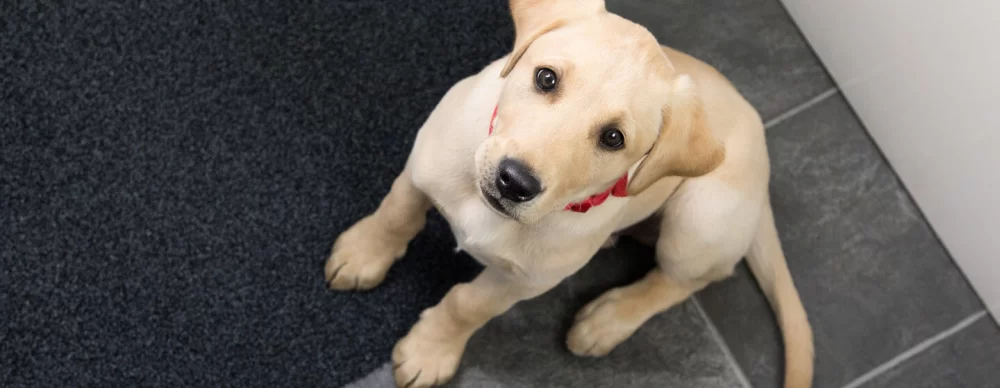How to Train Your Dog to Stop Begging: A Practical Guide for Dog Owners
When I first adopted Max, I quickly realized that he had developed a bad habit—begging for food. Whether I was having a meal at the table or snacking on the couch, Max would sit there, staring at me with those big, pleading eyes, waiting for a handout. At first, it seemed cute, but soon, it became a nuisance. The constant begging during every meal started to get out of hand. I knew I had to do something to address this behavior, so I began working on training him to stop begging. In this article, I’ll share the strategies and techniques that worked for me to stop Max from begging, and I hope they’ll help you too.
1. Understanding Why Dogs Beg for Food
Before I could train Max to stop begging, I had to understand why he was doing it in the first place. Begging is a natural behavior for dogs, and it’s often reinforced by their environment. Dogs beg because they’re seeking attention, food, or both. In Max’s case, it started as an innocent attempt to get a little extra food, but over time, he learned that his begging was rewarded with scraps. The more I gave in, the more Max would beg, reinforcing the behavior.
Dogs are opportunistic animals, and if they see an opportunity to get food or attention, they’ll take it. The key to stopping begging is breaking the cycle of reinforcement and teaching your dog that begging will no longer result in a reward. This process takes time and consistency, but with the right approach, it’s definitely achievable.
2. Set Clear Boundaries Around Mealtimes
The first step I took to stop Max from begging was to set clear boundaries during mealtimes. Dogs thrive on structure and routines, and by making mealtime predictable, Max quickly learned when and where he was allowed to interact with food. I started by making sure that he was either in another room or in his crate during my meals. This removed the temptation and helped him understand that mealtime was not a time for begging.
At first, Max was confused. He’d watch me eat, sitting by my feet with those irresistible puppy eyes, but I remained firm and didn’t give him any attention during meals. Over time, he began to accept that mealtime wasn’t about him getting a treat. Gradually, I introduced him back into the room during meals, but only after he had learned to remain calm and not beg.
3. Reinforce Calm Behavior with Positive Rewards
One of the most important techniques I used was reinforcing calm behavior during meals with positive rewards. I would only give Max attention, treats, or even small snacks when he was calm and quiet. If he started to beg or whine, I would ignore him entirely. I never gave in to his pleading. This approach helped Max understand that calm behavior was rewarded, while begging resulted in no response.
At first, this was a challenge. Max would get frustrated, especially when he didn’t get what he wanted, but I remained consistent. If Max sat quietly or lay down on his bed without begging, I would reward him with praise or a treat after the meal. By reinforcing calm behavior and ignoring the begging, Max began to realize that he would be rewarded for good behavior and not for begging.
4. Train an Alternate Behavior
Rather than just stopping the begging behavior, I found it helpful to teach Max an alternate behavior that was more acceptable during mealtimes. Instead of asking him to stop begging, I taught him to “go to your spot,” a command that directed him to his designated spot (his bed or mat) during meals. Every time I sat down to eat, I would give him the “go to your spot” command, and when he complied, I would reward him with praise or a treat.
This approach worked wonders because it provided Max with a specific task to focus on during mealtime instead of just staring at me for food. Over time, Max learned that he could earn rewards by staying in his spot rather than begging, which redirected his focus away from food and towards the desired behavior.
5. Avoid Reinforcing Begging with Scraps
One of the hardest things to do when training a dog to stop begging is to resist the urge to give them food scraps. It’s easy to feel guilty when your dog looks at you with those big eyes, but giving in only reinforces the begging behavior. I had to be firm with myself and remember that any food I gave to Max during mealtime, no matter how small, was reinforcing the begging. I started to be very intentional about when and where I fed him, making sure that food was always given in his bowl and not from my plate.
Instead of feeding Max from the table or letting him have a bite of my food, I began using his regular feeding schedule as a way to make mealtime something he could look forward to. By keeping food separate from human meals, I helped him understand that he needed to wait for his own food and that begging during mealtime was not acceptable.
6. Teach the “Leave It” Command
Another helpful command that assisted in reducing Max’s begging was the “leave it” command. This command is essential for preventing unwanted behaviors like stealing food or begging. I practiced the “leave it” command during training sessions, using treats as the distraction. I would place a treat on the ground and say, “leave it,” and when Max stopped trying to grab it and looked at me, I rewarded him with a different treat.
By reinforcing the “leave it” command, I taught Max that he should ignore food or other distractions when I asked him to. This command became particularly useful when I was eating and Max was tempted to beg. The “leave it” command redirected his focus away from the food and towards me, reinforcing the idea that his behavior would be rewarded with something positive.
7. Consistency is Key
The most important lesson I learned during this process was the importance of consistency. Training Max to stop begging didn’t happen overnight. There were times when he tested my patience, but I stuck with it. Every time Max begged, I ignored him. Every time he sat calmly or went to his spot, I rewarded him. Consistency is what helped Max understand that begging would never result in a reward, but calm behavior and patience would.
As a pet owner, it’s essential to remain patient and persistent. The more consistently you apply the rules and reinforce good behavior, the quicker your dog will learn. Eventually, Max stopped begging at the table altogether, and our mealtime became a much more peaceful experience.












